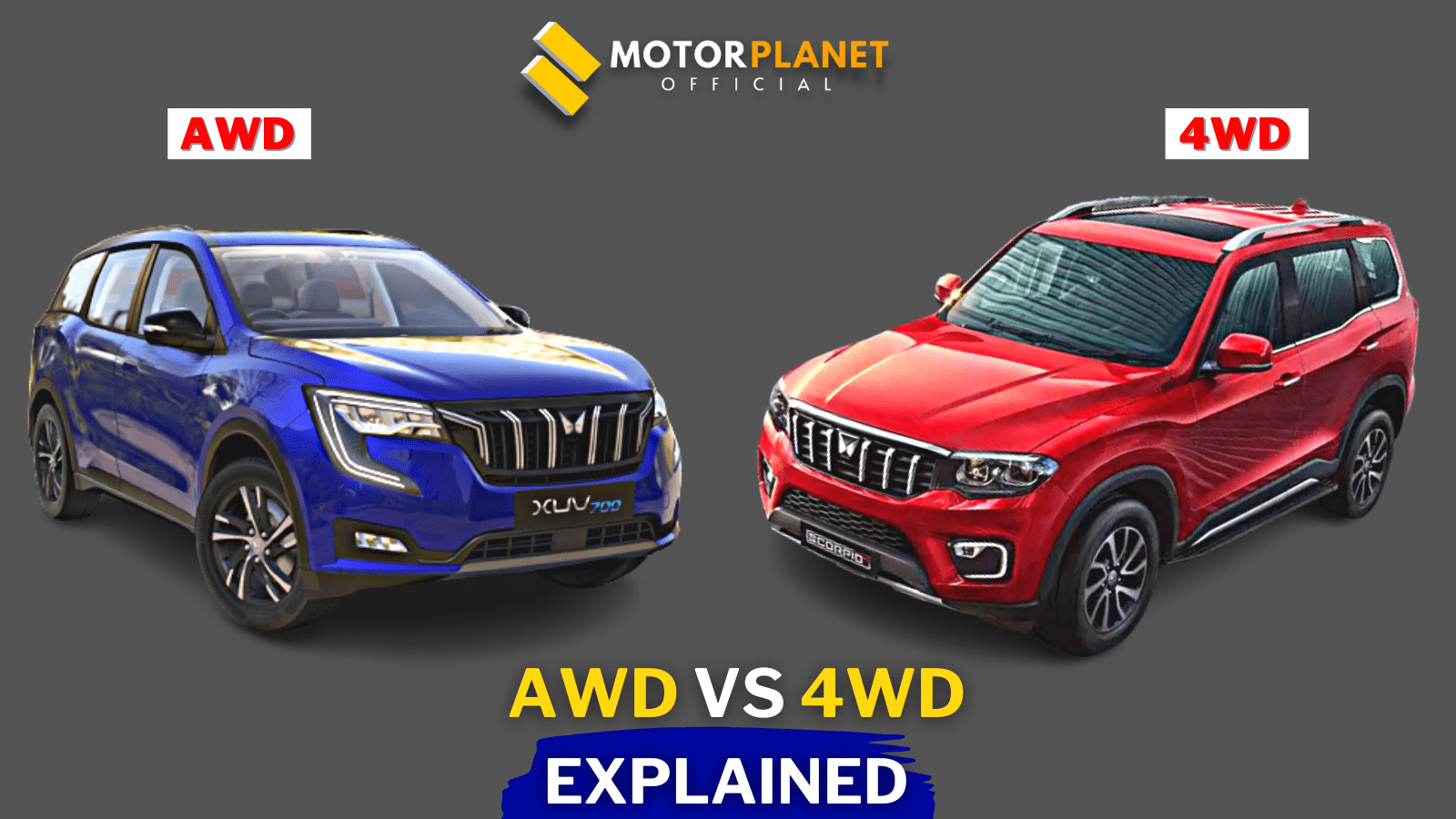I’ve seen a lot of people get confused between AWD and 4WD vehicles. Despite their similarities, AWD and 4WD differ in a few ways that you need to know if you want to drive informed. But what makes them different? What’s better, 4WD or AWD? I will try to resolve everything in this article, and after reading it, you will never be confused between AWD and 4WD vehicles again.
Is 4WD the same as AWD?
A big No! 4WD and AWD vehicle systems are different, and using them interchangeably will lead to you ridiculing yourself in intellectual discussions.
What is ALL-WHEEL DRIVE ( AWD )?
In an All-wheel drive system, all four wheels can gain traction independently of one another.AWD is always on and is mostly used in cars, with the computer managing the system. When driving down the highway, the system sends the majority of the power to the rear wheels for maximum fuel efficiency. If the road conditions change, such as rain or snow, the system adapts and evenly distributes the power to all four wheels, ensuring maximum drive grip with little to no wheel spin.

It keeps the vehicle moving more quickly than front-wheel drive or rear-wheel drive on snow-covered or rain-slicked roads. To implement it, a car has three differentials, or gearboxes, located at different points in its body. The three gearboxes are located at the front, the centre, and the rear of your car, which means your four tires can get traction independently, which makes your car very dependable and easy to drive in all kinds of weather.
But what is the significance of AWD in automobiles? AWD is capable of consistently directing engine power to all four tyres and is primarily intended for on-road driving. The best thing about AWD systems is that they generally operate with no driver intervention, The system is designed to detect traction loss and send power where it is needed. Although some car manufacturers offer selectable modes that allow some control over how much power goes where.
AWD vehicles do not have a transfer case; instead, they have limited slip differentials or electronically controlled clutches that send torque precisely where it is needed for maximum traction without sacrificing rotational difference between the front and rear axles. Does AWD use more gas? Yes, the answer is yes. AWD vehicles typically get fewer mpg than the comparable front- or rear-wheel-drive vehicles.
Some common examples of AWD vehicles include the Mahindra XUV700, the Suzuki Grand Vitara, the Toyota Urban Cruiser Hyryder etc.
What is 4 Wheel Drive ( 4WD )?
Four-wheel drive is a more conventional method of controlling all four wheels.
Under normal circumstances, only the rear wheels drive the vehicle forward, while the front wheels spin freely. In the case of AWD, we saw that the system does not require driver intervention to activate, but almost all 4WD systems have low and high ranges that the driver can select, either with an electronic switch or a floor-mounted mechanical lever.
The low setting provides the best off-road traction, while the high setting is useful for slippery road conditions such as packed snow, ice, loose sand, and gravel. But, because the four-wheel drive isn’t meant to be on all the time, you must know when to use it and when to turn it off. There are two types of 4WD systems found in 4WD vehicles: on-demand 4×4 (also known as part-time 4WD) and full-time 4WD.
Part-time 4WD systems are the most common type of four-wheel drive and can be found in SUVs (for example, Toyota Fortuner, Mahindra Scorpio) and off-roaders (for example, Mahindra Thar) and trucks that are designed to work and play in more extreme conditions. In this case, the vehicle is typically propelled by two wheels, usually at the rear. When 4WD is required, the driver must make the decision to engage it and either push a button or shift a lever. Some systems also allow the driver to lock the differentials of the vehicle for added traction in extreme off-road conditions.
Full-time 4WD, on the other hand, works similarly to a full-time AWD system, with all four wheels receiving power continuously.

You’ve probably seen some 4WD vehicles crawling over rocks, off-roading through the desert, or crossing rivers with water up to the mirrors. 4WD systems, which are typically driven by a mechanical linkage, use the front, centre, and rear differentials, as well as transfer cases and couplings, to transfer torque to all four wheels.
Examples of 4WD vehicles include the Mahindra Scorpio-N, Toyota Fortuner, Toyota Hilux pickup, Mahindra Thar, Force Gurkha, and others.
What is the ideal vehicle for an off-road enthusiast? 4WD or AWD?
The answer is 4WD! Generally, 4WD vehicles are the best at handling adverse conditions on and off the road. The four-wheel drive is generally bigger, heavier, more robust, and has a drivetrain and chassis designed to withstand the most extreme off-roading, so they are well suited to slow-going driving through rugged conditions. These systems are available in well-appointed luxury SUVs, and they can also be found on off-road vehicles.
Even though AWD is capable of handling rain, snow, and light off-roading, serious off-roaders consider it to be a lesser choice. Always remember that all-wheel drive vehicles are designed for use on roads with some dirt or light-duty off-roading. It is not designed to handle rough off-roading, such as long stretches in soft sand.
Although that does not mean that you can’t off-road your AWD car, just make sure you don’t drive it as hard as your 4WD friends do. Because AWDs have less ground clearance than 4WDs, they are more vulnerable to getting caught up in obstacles (rocks, stumps) and in deep sand.

